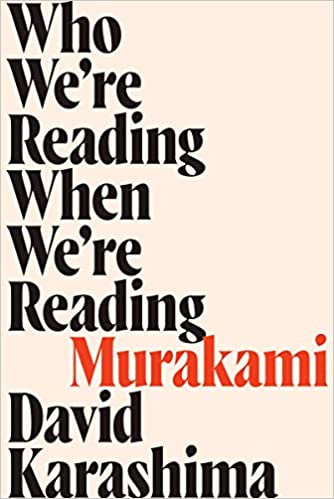A play on the title of Haruki Murakami’s nonfiction What I Talk About When I Talk About Running, which is itself a play on Raymond Carver’s brilliant collection of short stories What We Talk About When We Talk About Love, David Karashima’s book Who We’re Reading When We’re Reading Murakami is a sincere and meticulous research into the creation of the myth of Murakami. The popularity of Japanese author Haruki Murakami has been phenomenal in the world of contemporary literature, turning him into one of the most widely read and loved writers of the world.
Following a tiny preface, Karashima’s book is cleverly structured into five precise sections, coursing the trajectory of Murakami’s growth as a novelist of international proportions – Pinball, 1973, Hear the Wind Sing, A Wild Sheep Chase, Hard-Boiled Wonderland and the End of the World, The Elephant Vanishes, Dance Dance Dance and The Wind-Up Bird Chronicle. The book also offers quaint glimpses in the form of photographs of the indispensable individuals responsible for transforming Murakami into a household name.
Translation emerges as one of the primary factors of analysis when one discusses Murakami’s oeuvre. Murakami enthusiasts are able to read and appreciate his narratives only through the sheer brilliance of his excellent translators. Karashima, a translator himself, notes in his acknowledgement about the numerous times his name doesn’t feature on the cover pages of books. Maybe this eventual loss of glory (if it may be called that) is what compels him to provide such an earnest and adequate space to Murakami’s English translators, especially to Alfred Birnbaum and Jay Rubin.

Who We’re Reading When We’re Reading Murakami, David Karashima, Soft Skull Press (2020)
Karashima’s painstaking narrative offers recognition to not just the translators, but to all of Murakami’s editors and agents. Lengthy and detailed backgrounds of individuals central to Murakami’s celebrity status have been provided, along with information ranging from personal to professional, embarrassing and uplifting. Karashima’s book is a celebration of the immensely efficient, versatile, insightful and hard-working individuals whose persistent and consolidated efforts led to the creation and evolution of the Murakami phenomenon.
Karashima has collated endearing snippets of letters, faxes and emails to highlight the urgency and contagious excitement of launching a comparatively new author in both domestic and foreign scenarios. The nostalgic scenes of Birnbaum and Elmer Luke (translator and editor) working for hours trying to come up with the perfect rendition of A Wild Sheep Chase are truly overwhelming. Karashima also provides a unique exploration into the slippery nature of memories, his numerous interviews of myriad personalities directly or indirectly associated with the Murakami boom- contradicting, denying, reaffirming and reconstituting opinions and information as unreliable narrators in the narrative of life.
Another fascinating inclusion by Karashima is the aspect of cover designs, an integral element in the large scale visibility of the book and eventually the novelist. The unbridled genius of Chip Kidd, the primary cover designer of Murakami’s Knopf editions, can hardly be sidelined while discussing the surge of Murakami’s popularity in the West. Despite the adage, people still fall prey to the pitfalls of judging a book by its cover; however, in this case, the covers and the books complement each other in a unique symbiosis.
Also read: On Murakami, Mistakes and Moving on
In the transition of Murakami from a Japanese literary heartthrob to one of the few Asian writers being featured in The New Yorker, one notices a subtle hint of irony in Karashima’s report. Extracts from Murakami’s works are heavily edited, often diluted and transformed to fit into the prescribed tenets of the prestigious magazine; being associated with it means more important that the underlying metamorphosis. However, the tag of a New Yorker writer establishes the foothold in America which Murakami had wished for.
The eventual yet inevitable emigration from Kodansha International to Knopf and then to Vintage, Harvill Press and others is poignantly documented by Karashima through ceaseless research, statistical data, facts and figures – all disparate yet relevant parts forming the composite whole of the dynamic publishing industry.
Karashima’s tone is often oxymoronic – full of detached sensitivity, enumerating the tremendous highs and the abysmal lows of an industry caught in the conflicting throes of intangible dissemination of ideas and knowledge on one hand, and the capitalistic consumption and proliferation on the other. Karashima’s book provides a phenomenal insight into the perseverance, faith and responsibility which enable the creation of the image of a particular writer, which acknowledge and solidify his reputation and transmit the image in the greatest possible light throughout the world.
Dr. Chaandreyi Mukherjee has pursued her Ph.D. from Jamia Millia Islamia on “Womanhood in Haruki Murakami’s Fiction.” She is presently employed as an Assistant Professor (ad-hoc) in the Department of English, Vivekananda College, University of Delhi. She is an avid reader and a regular reviewer of books on Instagram (@paperback.girl).
Featured image credit: Reuters

